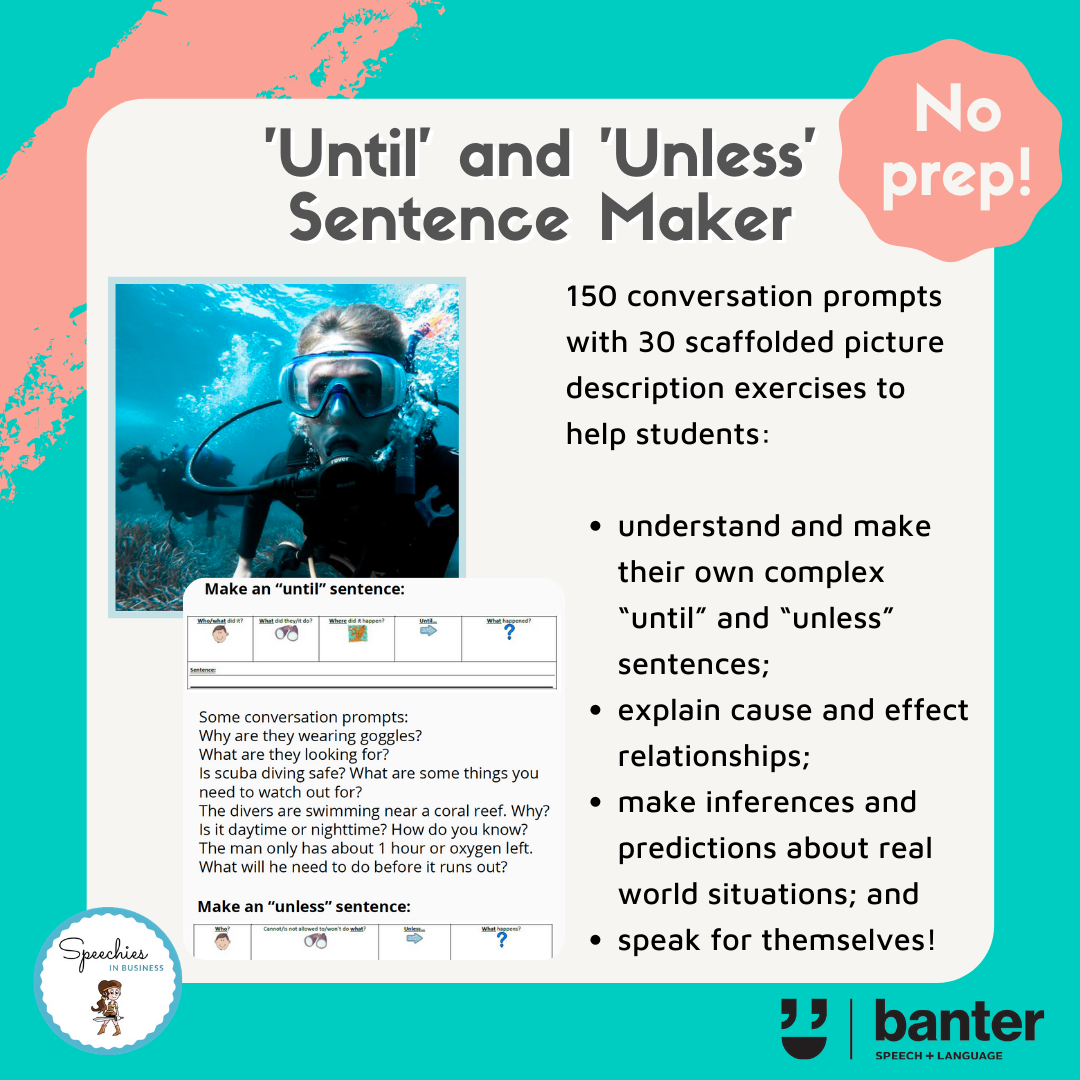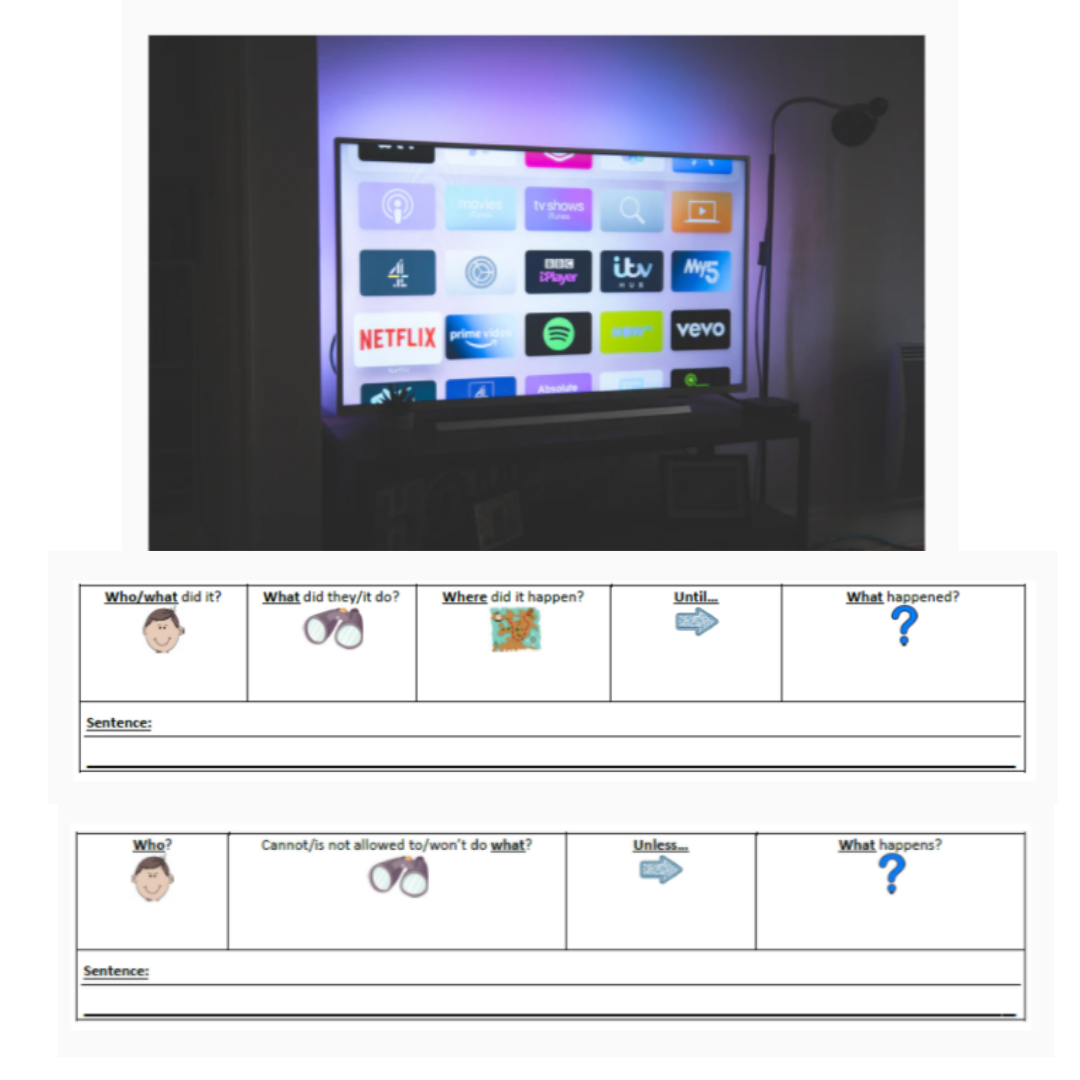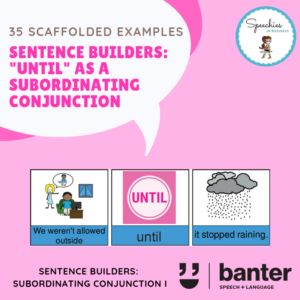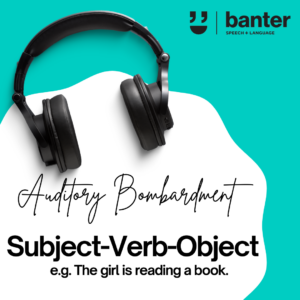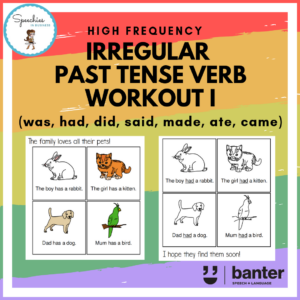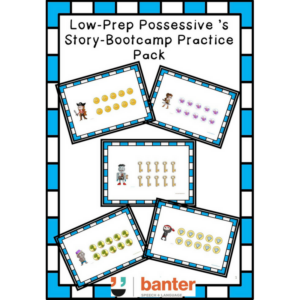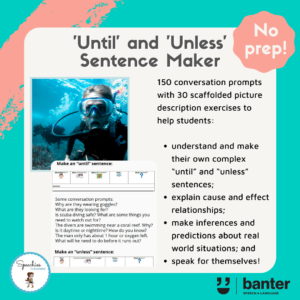(L252) Sentence Maker: “Until” and “Unless”
$6.99 including GST
This no-prep 35-page picture description resource is designed to help by providing a bridge between highly structured sentence-level exercises (like Sentence Builders) and discourse level text types (like narratives).
Featuring 30 high quality, interesting photos, this resource includes scaffolds for “until” and “unless” sentence generation, with 150 prompts for different parts of speech, and different types of clauses, that allow you to target your syntax goal (or goals), while using evidence-based language therapy techniques like recasting, building up and breaking down, extensions and expansions, focused stimulation and modelling.
Description
Many children and others who are learning English as a second language and/or who have developmental language or learning delays have difficulties understanding and using correct word order in sentences.
For beginners, our simple, compound and complex sentence builders are a great way to start, with highly structured practice and lots of repetitions. But, to truly learn how to use sentence forms and to transfer those skills to conversation, storytelling and other kinds of discourse, you need to generate your own sentences.
This no-prep 35-page picture description resource is designed to help by providing a bridge between highly structured sentence-level exercises (like Sentence Builders) and discourse level text types (like narratives).
Featuring 30 high quality, interesting photos, this resource includes scaffolds for “until” and “unless” sentence generation, with 150 prompts for different parts of speech, and different types of clauses, that allow you to target your syntax goal (or goals), while using evidence-based language therapy techniques like recasting, building up and breaking down, extensions and expansions, focused stimulation and modelling.
Here’s how it works. Looking at the picture in the second thumbnail, we can use the scaffold prompts to generate a range of different sentence forms, including:
Subject Verb: I am watching.
Subject Verb Object: I am watching television.
Subject Verb Adverbial phrase: I am watching television in the living room.
Subject Verb Complement: The television is bright.
Compound sentences: The television is on so I will watch Netflix.
Complex sentences, featuring “until” and “unless”:
The boy watched television until dinner time. Until dinner time, the boy can watch television.
Unless you finish your homework, you cannot watch television. You must not watch television unless you have finished your homework.
This resource is designed to support the development of both oral language and written expression. It can also be used to generalise or transfer speech fluency (stuttering) and speech sound and articulation gains at the sentence level.
For more advanced students, the pictures can also be used to practice making inferences, predictions, for verbal reasoning tasks (e.g. cause/effect, sequencing, and problem solving), and as prompts for story-writing.
Once mastered, students can progress smoothly to discourse level tasks, including narratives and explanations.

